Aluminum Version
(Lighting Strike)
Static Hydrostatics and Coefficients
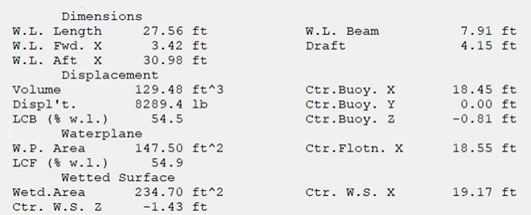
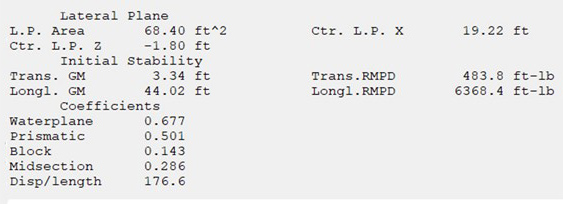
Location of the Center of Bouyance
The geometry of the hull calculates displacement at 8,289.4 pounds with the 'Center of Bouyance' located at:
18.45 feet aft of of the Fore Point of the hull.
0.00 feet from the Centerline of the hull.
-0.81 feet below the Design Waterline.
Location of the Center of Gravity
The 'Center of Gravity' calculation while the simplest, its time consuming process and should never be circumvent by emperical methods, rules of the thumb methods, or past designs.
The location of the Center of Gravity for a new design is determined by documenting the weight of every component of the design and its location within the design.
The 'Weight Study' used to calculate the total weight of the steel version of 'Lighting Strike' calculated its displacement at 11,527 pounds. A difference of 201.5 pounds from the weight of the geometric shape of the hull.
18.534 feet aft of of the Fore Point of the hull.
0.00 feet from the Centerline of the hull.
.391 feet above the Design Waterline.
For additional your reference the following drawing shows the positions of both the 'Center of Bouyance' and 'Center of Gravity' for the aluminum version of 'Lighting Strike'.
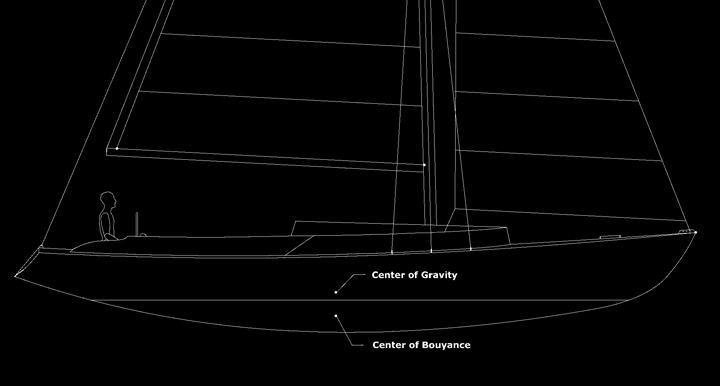
Dynamic Stability
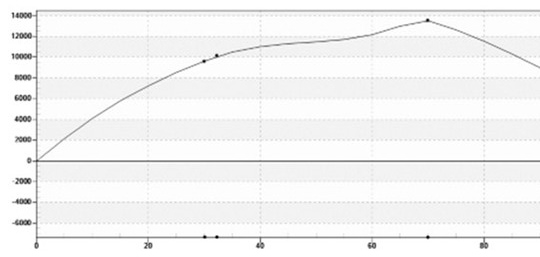
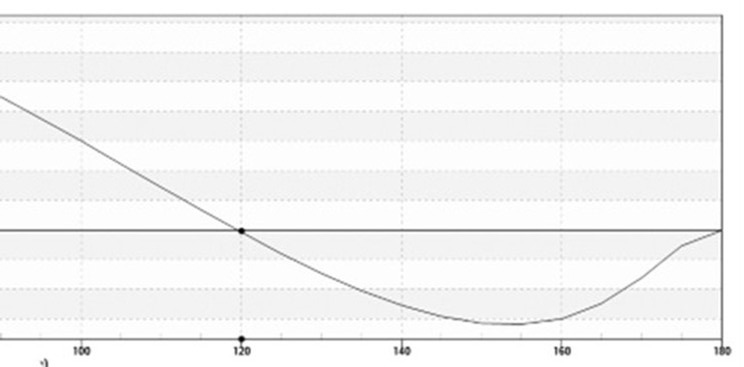
Aluminum Hull Stability Charts - Summary:
With the ‘Stability’ results at hand let’s look at the results using the four (4) charted ‘Points of Interest’.
Thirty-degree (30) angle of Heel : - 9,588 Pounds. This angle of heel is considered the high end of the normal sailing range
Angle of the Buried Rail: - 32-degrees· Considering the type of hull , I thought it would be good to know when the water meets the rail.
Maximum Righting Moment Angle: - 70-degrees at 14,000 Pound· After this angle of heel, the Righting Moment starts to decrease.
AVS – Angle of Vanishing Stability: - 120-degrees· This is the angle of heel that the hull will overturn. See chart below.
- Protected water sailboats can have an ‘AVS’ as low as 90- degrees.
- A 'Coastal Cruiser' would have an 'AVS' of at least 110-degrees.
- For offshore sailing where wind and large breaking waves are a real possibility, the 'AVS' should be no less than 120-degrees. (If wind and seas overturned and inverted a boat with an 'AVS' over 120-degrees, it would probably right itself in two minutes.)
- A boat with an ‘AVS’ of 150-degree and over would right itself on the next wave.
Sail Area / Wetted Surface Ratio = 2.40 and indicates how the boat will preform at lower ‘Speed to Length’ ratio’s where Fractional Resistance is predominate. The dot on the graph represents the crossing of the ratio and the length of the waterline. The aluminum version would have reasonably good light air performance.
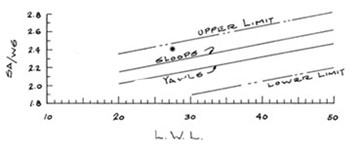
Sail Area / Displacment 2/3 = 21.30 is high, however consider that the same Sailplan for both for both the steel and aluminum hulls.
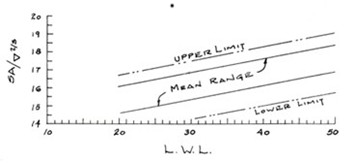
Wind Pressure Coefficient - Aluminum = 0.66 would make this aluminum version very tender at initial angles of heel.
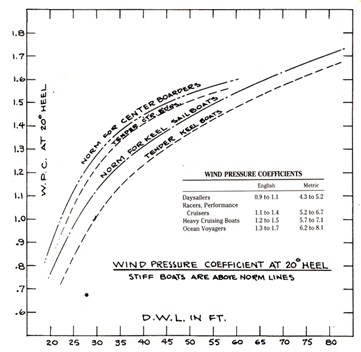
Dellenbaugh Angle - Aluminum = 22.1 would make this boat definitely tender.
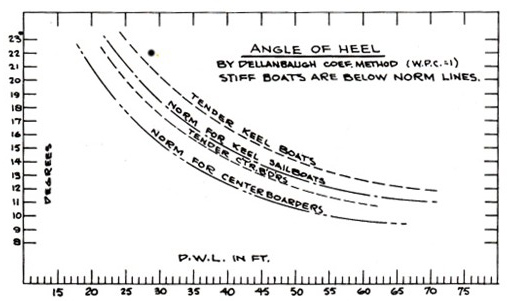
|
|
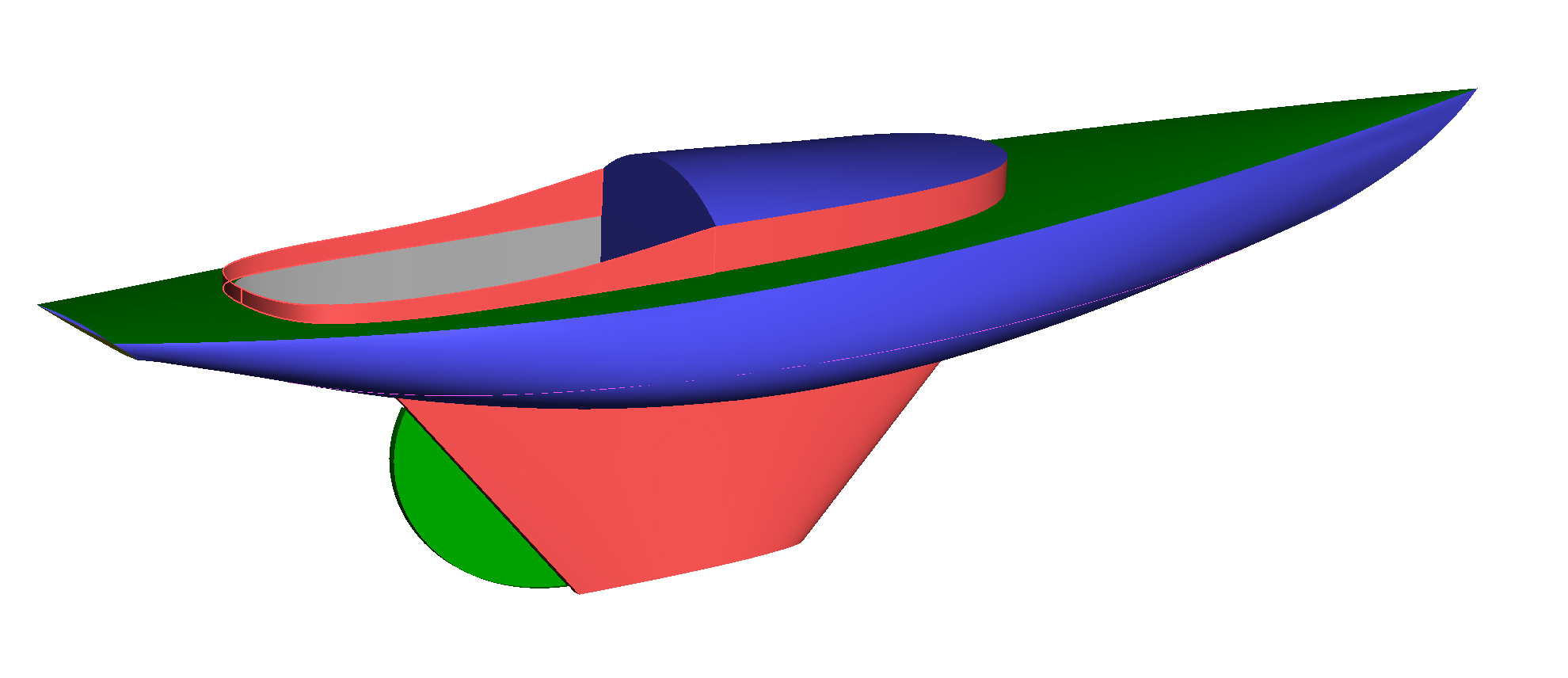
|
|
|
|
|
|
|
|
|
|

